Wednesday, August 5, 2009
posted by Deuce Richardson
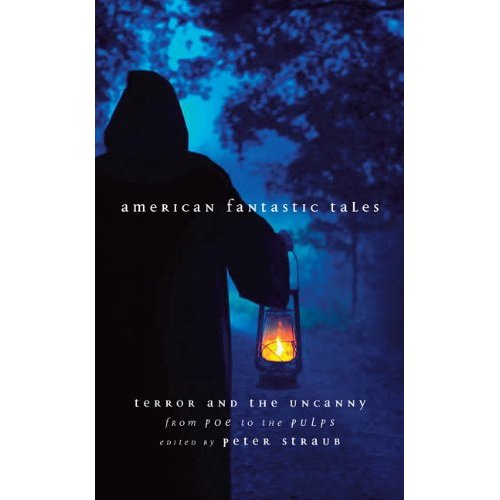
Edgar Allan Poe • Bret Harte • Charlotte Perkins Gilman • Ambrose Bierce • Edith Wharton • Ellen Glasgow • Robert E. Howard • H. P. Lovecraft • Clark Ashton Smith • Robert Bloch •
That’s the lead-in list of authors on the Library of America site for their forthcoming edition of American Fantastic Tales: Terror and the Uncanny From Poe to the Pulps, edited by Peter Straub. Apparently, Robert E. Howard rates in the “Top Ten” of American weird/horror authors (published prior to 1940) out of a total of forty-five. We are grading on the curve here, but in a good way. Since one would assume all authors in a Library of America collection should be “A-List” writers of some sort, Robert E. Howard would seem to be in the “A+” grouping.
(Continue reading this post)
Wednesday, July 29, 2009
posted by Deuce Richardson
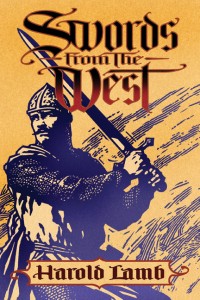
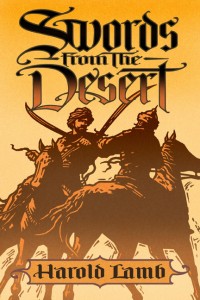
Two new books collecting Harold Lamb’s pulp adventure fiction are on the horizon and I could not be happier. Swords From the West and Swords From the Desert are slated to thunder into bookstores this September, courtesy of the Bison Books imprint from the University of Nebraska Press. Scott Oden (who wrote the introduction for Swords From the Desert) and Morgan Holmes have both weighed in on their respective blogs. I thought I would toss in my two debased dinars.
(Continue reading this post)
Sunday, July 26, 2009
posted by Leo Grin
The latest progress report booklet from the 2009 World Fantasy Convention (being held October 29-November 1 in San Jose, CA) has announced that the Special Guests this year will be Richard Lupoff and Donald Sidney-Fryer. You can download a copy of the progress report here and read all about it on page 6.
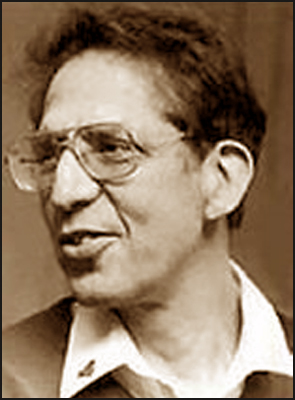
A young Dick Lupoff
One of my reasons for starting The Cimmerian was to once again get some of the founding fathers of the modern pulp/fantasy critical arena on record about REH. Among many other accomplishments, Richard Lupoff wrote the seminal volume of Edgar Rice Burroughs criticism, Master of Adventure, (a book that served as one of Don Herron’s major influences when producing his Robert E. Howard critical volume The Dark Barbarian). Donald Sidney-Fryer is, of course, the premier Clark Ashton Smith scholar, doing much of the major early research and publishing the bio-bibliography Emperor of Dreams. Both have written perceptively about REH in the past, and were well-known admirers of the Texan’s writings. It was grating, therefore, to see both critics excluded from the various REH fanzines and journals in the modern era.
(Continue reading this post)
Wednesday, July 22, 2009
posted by Deuce Richardson
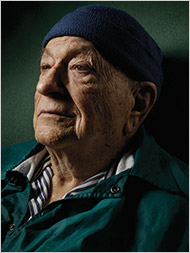
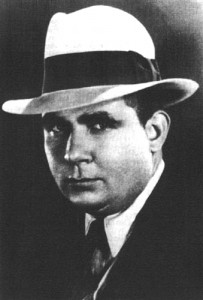
Last week, Robert E. Howard got name-checked in the New York Times Magazine, due in equal measure to Jack Vance and Carlo Rotella. Jack’s contribution consisted of being the subject of the article and of having been a fan of Weird Tales during the Depression. Rotella did his part by being an assiduous journalist and a reader of discerning tastes.
(Continue reading this post)
Wednesday, July 15, 2009
posted by Deuce Richardson
My copy of REH: Two-Gun Raconteur #13 came in the post on the same day that a long-awaited guest arrived. Due to previously scheduled essays, I’m only now getting around to singing this issue’s praises. Morgan Holmes has already weighed in on the REHupa site, but I hope that this review will complement his.
I must admit that I never read the earlier issues of “TGR” when they were published back in the 1970s. I was but a wee lad back then. However, I have perused the “Out of Print” section on Damon C. Sasser’s website. REH: Two-Gun Raconteur has always been a worthy publication, mixing real Howardian scholarship, quality art and fannish fun. That was definitely my impression when I bought the first “relaunch” issue in 2003.
REH: Two-Gun Raconteur #13 greets you with a full-color cover depicting Kull and Brule whaling away at serpent-men. Sasser went with color covers (one of the advancements of civilization we can all be thankful for) a while back. That move got my unequivocal support at the time, and this cover changes that opinion not one whit.
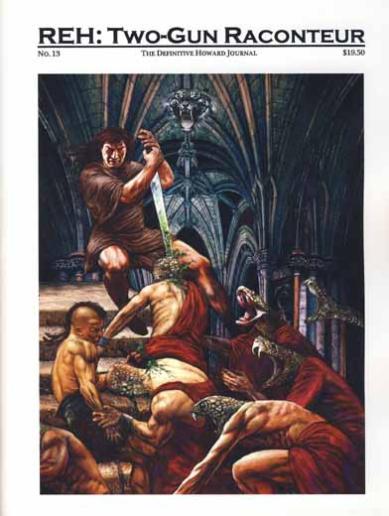
(Continue reading this post)
Friday, July 10, 2009
posted by Steve Trout
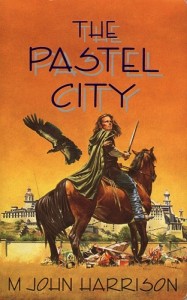
M. John Harrison’s The Pastel City has long been one of my favorite books. Recently I read it again for the third or fourth time. It is set in a desolate future Earth, where large tracks of land are given over to polluted wastes and deserts of rust. There are ruined cities and ruined machines left over from the civilizations of the past, the Afternoon Cultures.
Across this backdrop strides tegeus-Cromis, a black-clad swordsman supreme, something of a somber Solomon Kane figure, though he is a poet rather than a Puritan. He and his fellow Methven, a knightly order that served the old king, are caught up in a new war involving the new queen, Northmen, and deadly brain-harvesting machines dug up from the past. The plot is fairly slight, and has a deus ex machine taint to the conclusion, but what stands out is the Future Gothic moodiness, the characters, and some great dialog.
Tomb the Dwarf, who is good with his hands, finds an immense exoskeleton and repairs it — strapped into it, he hoists his energy-bladed axe and shouts “I’ll shorten them!”
Tegues-Cromis, in despair, facing enemies who outnumber him vastly, pleas “Come and kill me. Just come and try.”
If you’re not familiar with this book, you should try it out. Be aware the sequels are disappointing.
Wednesday, July 8, 2009
posted by Deuce Richardson
“Bullfighting is indeed a reversion to Roman amphitheater days. I have an idea that the Mediterranean peoples have practiced it in some form or other every since the days of Crete, where it flourished, according to vases and the like.”
Robert E. Howard to HP Lovecraft, ca. January 1931
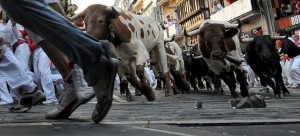
The bulls are running again in Pamplona, once the heart of medieval Vasconia, and what is now known as the Basque Country. The Feast of St. Fermin is an ancient one, with records attesting the encierro going back at least eight centuries. There are some indications that its roots extend much further. (Continue reading this post)
Friday, July 3, 2009
posted by Steve Trout
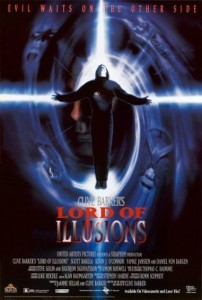
I’ve never been much of a Clive Barker fan, so I never saw “Lord of Illusions” when it came out. It’s been playing on our cable though, so we gave it a try. Despite Leonard Maltin’s half-hearted endorsement (“Intelligent thriller [. . .] better than the usual genre fare, but it’s thinly plotted, and condescends slightly to its audience” it was entertaining enough and I never saw any condescension.
It stars “Quantum Jump”-er and “Star Trek Enterprise” captain Scott Bakula as a out-of-his league gumshoe and a very hot, young Famke Janssen (Jean Grey of “X-Men” ) as the damsel in distress. The plot, which involves cults and real magic, has several Howardian elements, which makes me wonder if Barker is a fan.
At the start, two cultists murder a mystic, and one of them has filed teeth (not that that necessarily owes anything to Howard’s “Shadows in Zamboula” — but the other one is the creepier. This is a prelude to the main plot, which involves the PI being hired to check into whatever problem is haunting an illusionist, who then apparently dies in a stage accident. He has been hired by the sultry wife/widow whom he promptly bangs. What the illusionist feared is a man who has been dead for over a decade –a man who taught him that magic was real. In a very creepy sequence with echoes of Acheron, this dead sorcerer is brought back to life by his faithful cult.
For our P.I. hero, who seems not too far removed from Howard’s River Street, handgun fire is a hearty incantation, but in the end, it is the borrowed power of a formerly subordinate mage (the illusionist, not actually dead after all, but now getting there) who tried and failed to stem the black master’s evil — as in “People of the Black Circle” — that lets our braver and more determined hero throw the sorcerer back down to hell, in a sequence that relies on flashy special effects to the detriment of good storytelling. Still and all, a very interesting film.
Friday, June 26, 2009
posted by Steve Trout

Robert E. Howard fans usually have a strong opinion regarding the practices of pastiching and “posthumous collaboration”, which has been archly described as a work by two authors whose positions should be reversed.
I remember when the family of the late V.C. Andrews hired a ghostwriter, Andrew Neiderman, whose name appeared nowhere in the books, to continue her works under her name. I thought that was horribly misleading of them. You had to check inside to find it wasn’t actually her work. I thought that the Howard pastichers would have loved an arrangement like that.
But recently I saw something new in posthumous writing: Devil May Care by Sebastian Faulks writing as Ian Fleming. Now I get Stephen King writing as Richard Bachman, or Karl Wagner writing as Kent Allard, even, but “writing as Ian Fleming?” Don’t you have to be Ian Fleming to do that? I know if I ever saw a book by Leonard Carpenter or some other twerp “writing as Robert E. Howard” I’d be tempted to set fire to the things right in the bookstore. It’s amazing what’s for sale these days.
More on the book here.
Friday, June 19, 2009
posted by Steve Trout
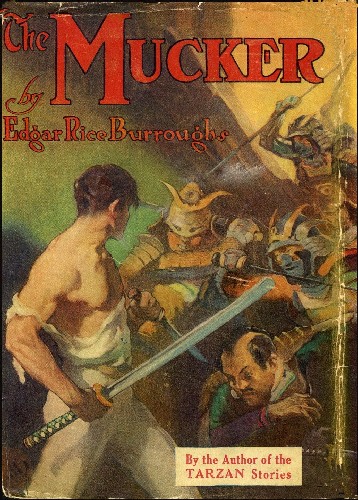
I’ve long believed that Edgar Rice Burroughs tenth novel, The Mucker, had a stronger impact on Robert E. Howard than those of Burrough’s works featuring his better-known characters. This occurred to me when I worked up a small article on the evolution of Conan’s character; how the wandering barbarian is at first a careless thief, than a mercenary soldier and pirate, and at last evolves into a responsible frontier scout, and finally a benevolent king. Burough’s Billy Byrne undergoes an even more drastic change of character though the two lengthy serials that ran in “All-Story Cavalier Weekly” in 1914 and 1916, and gathered together in book form in 1921. We do not know for sure if Howard read the magazine appearances, but the book was among those in his library, along with several other works by Burroughs.
(Continue reading this post)
















